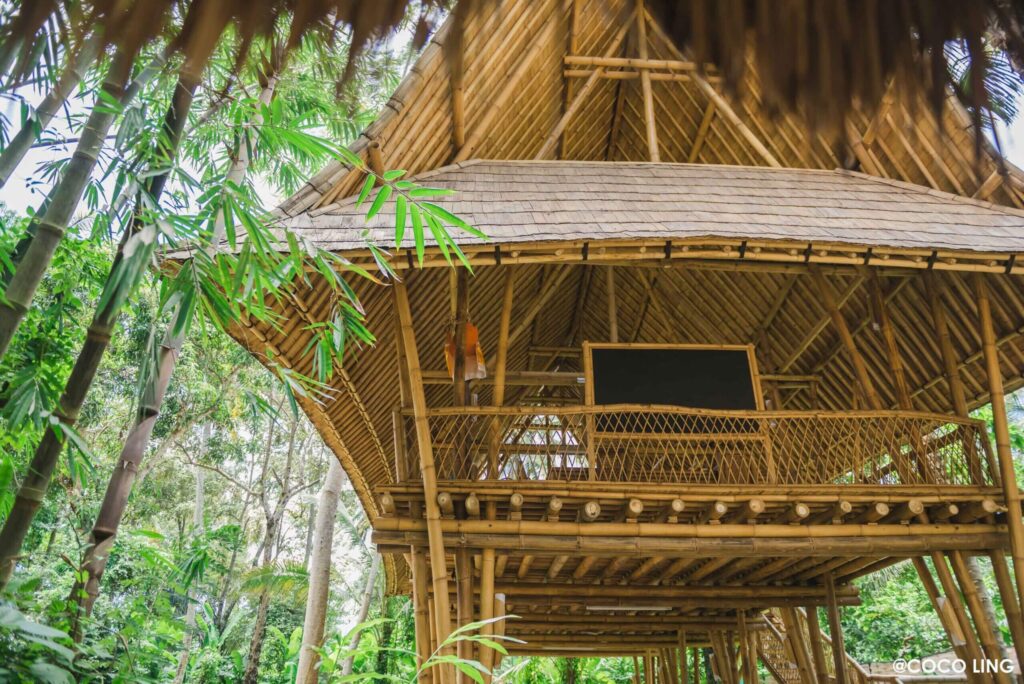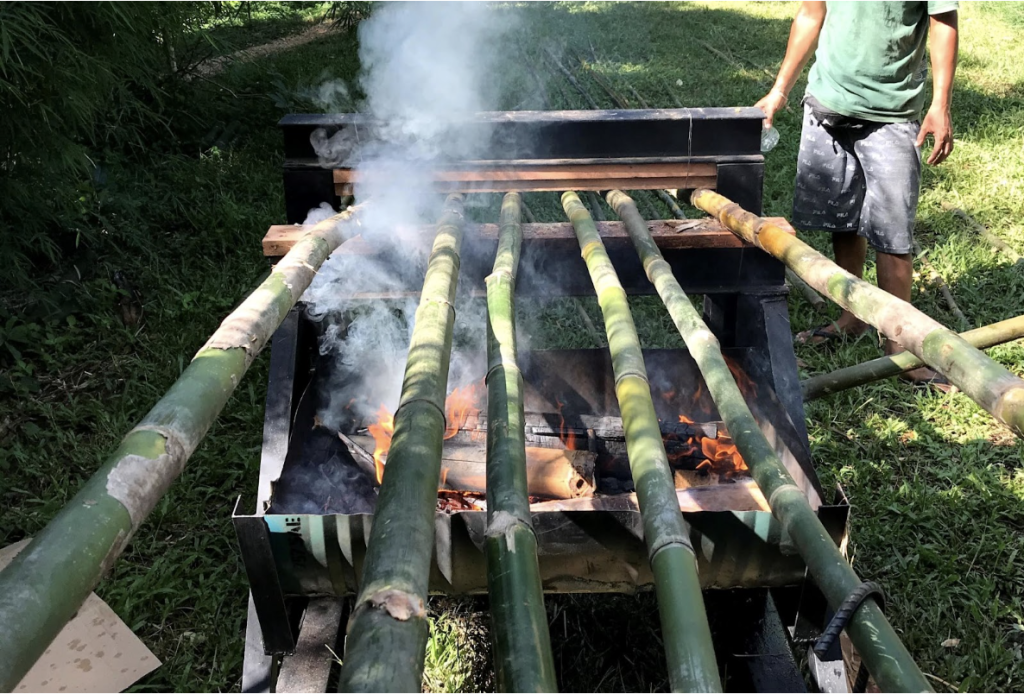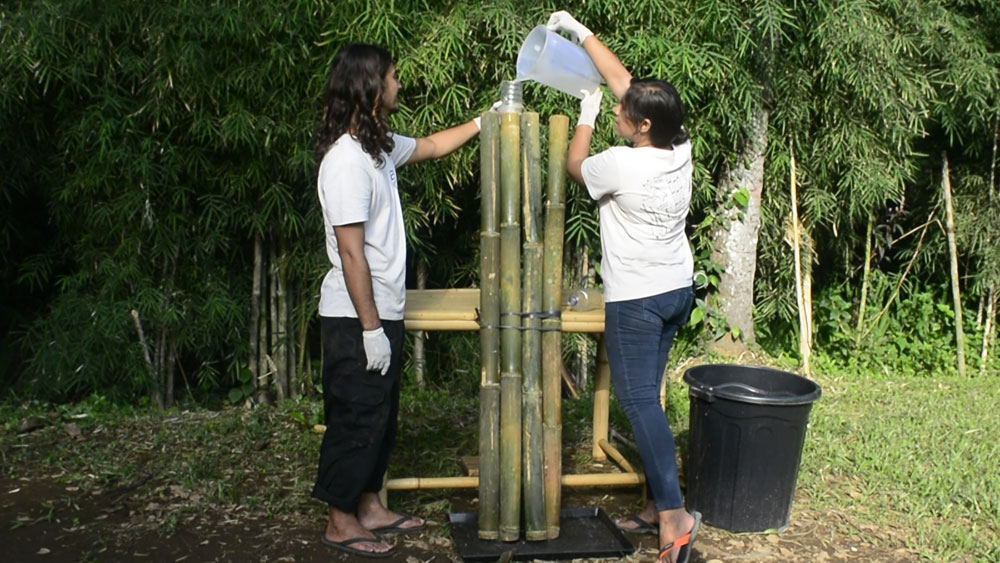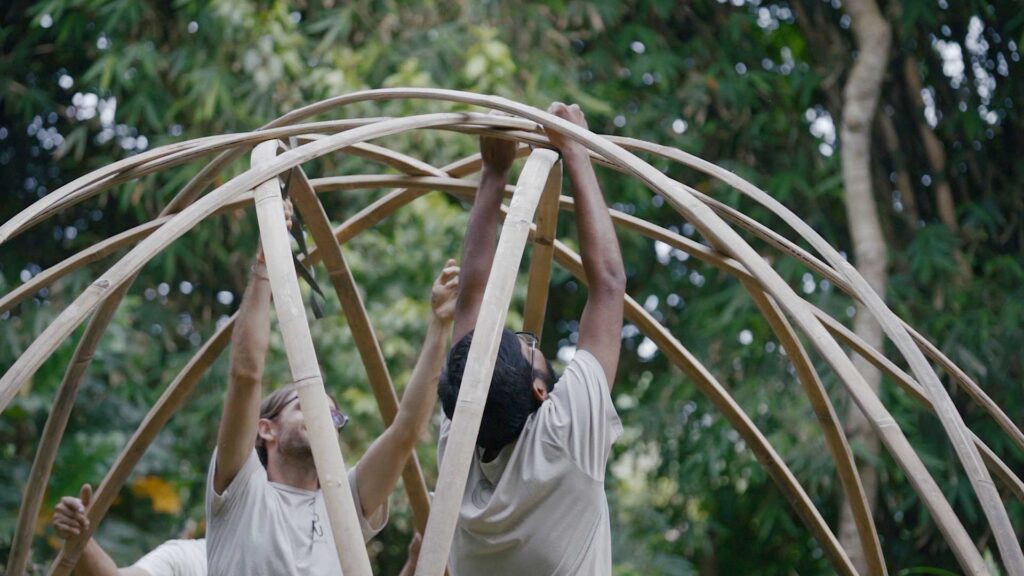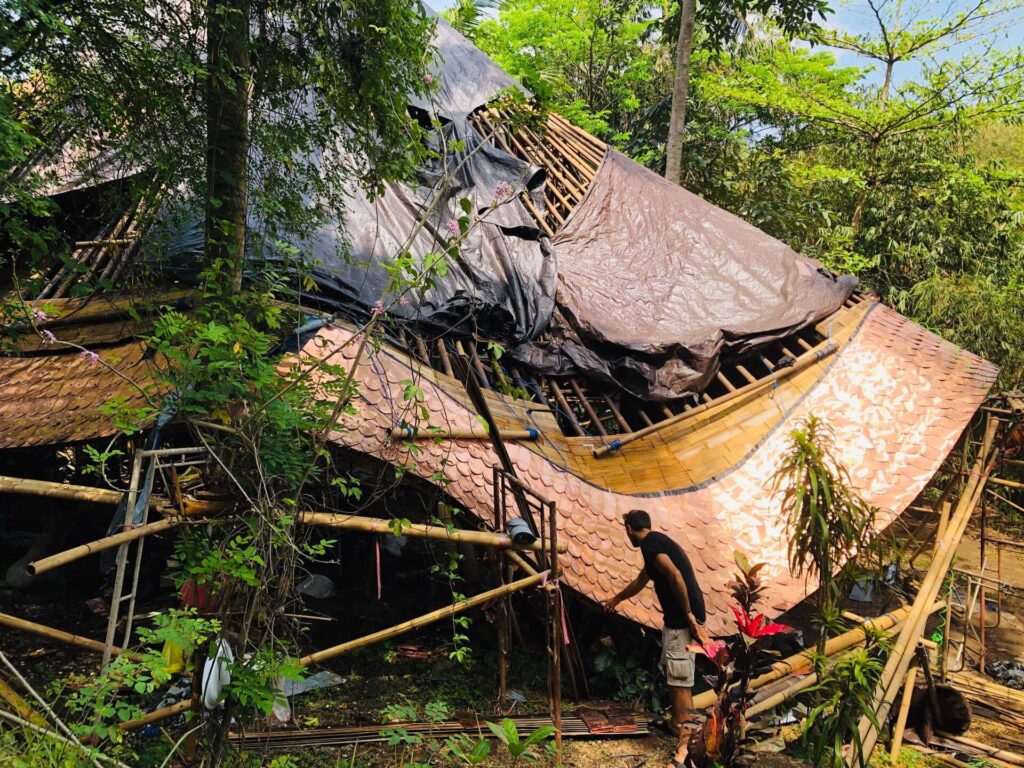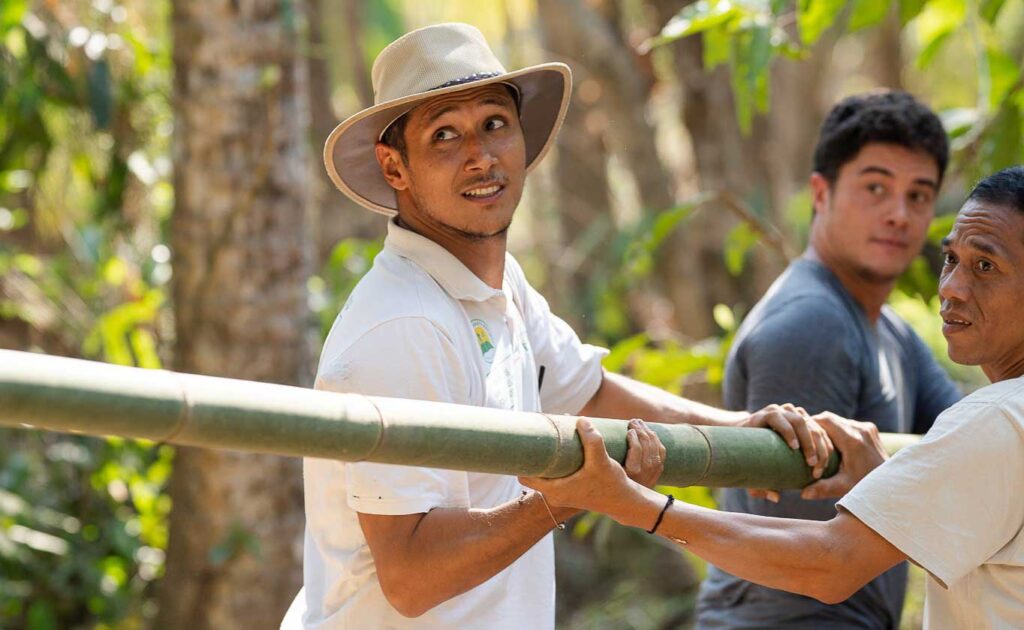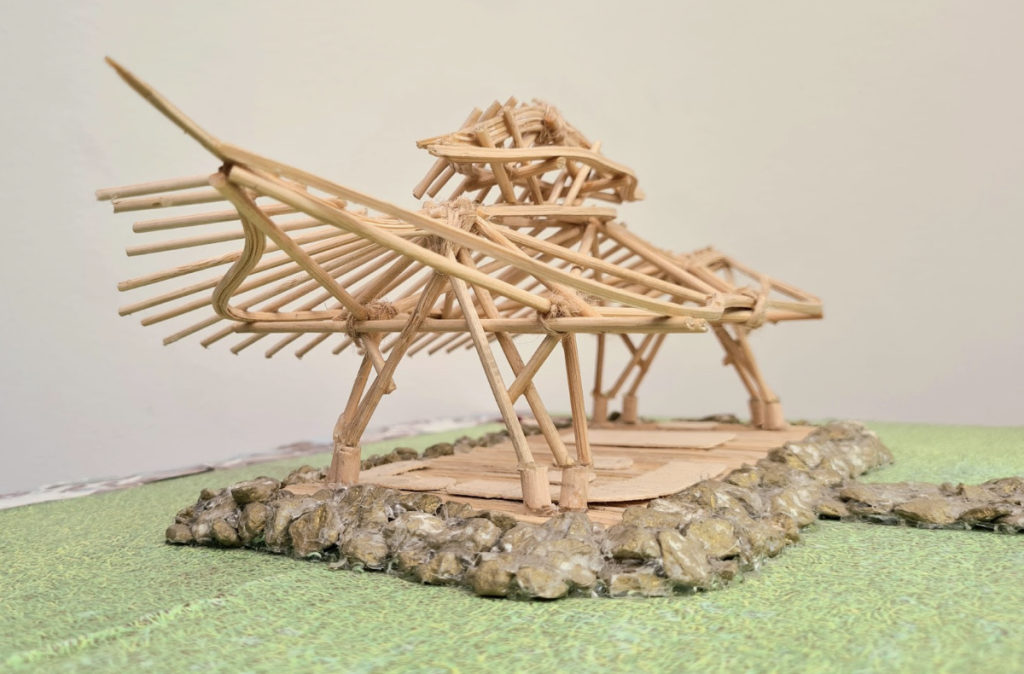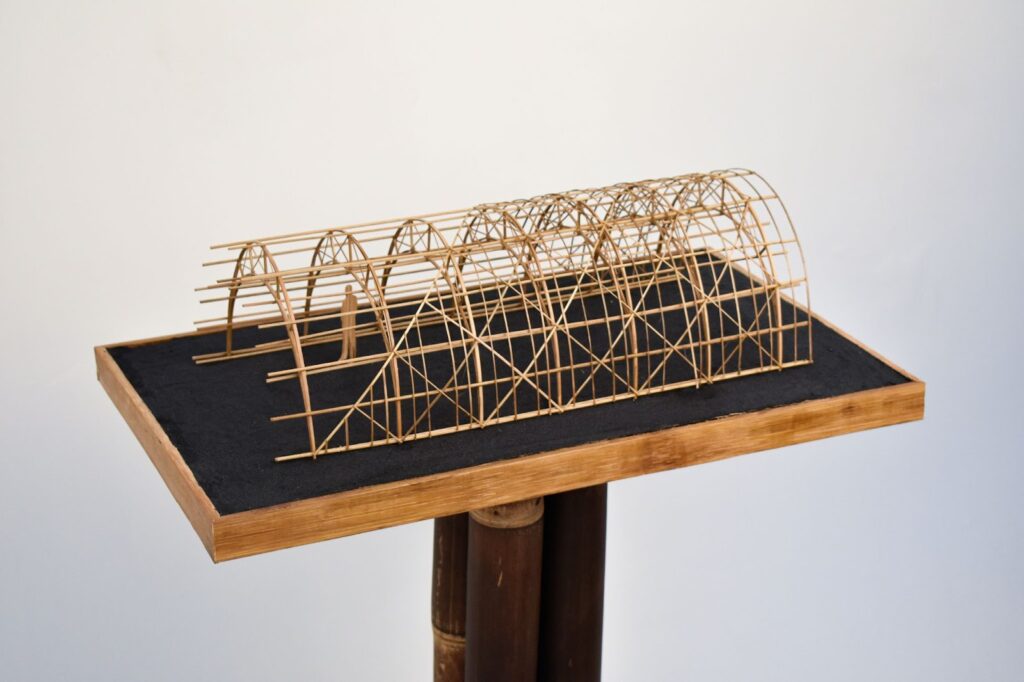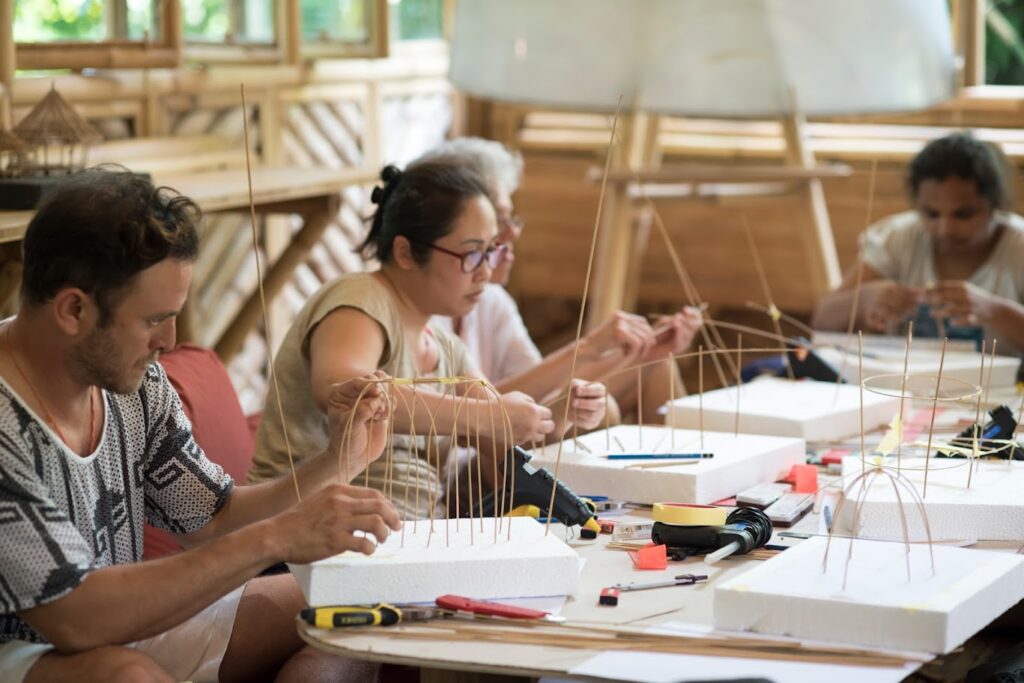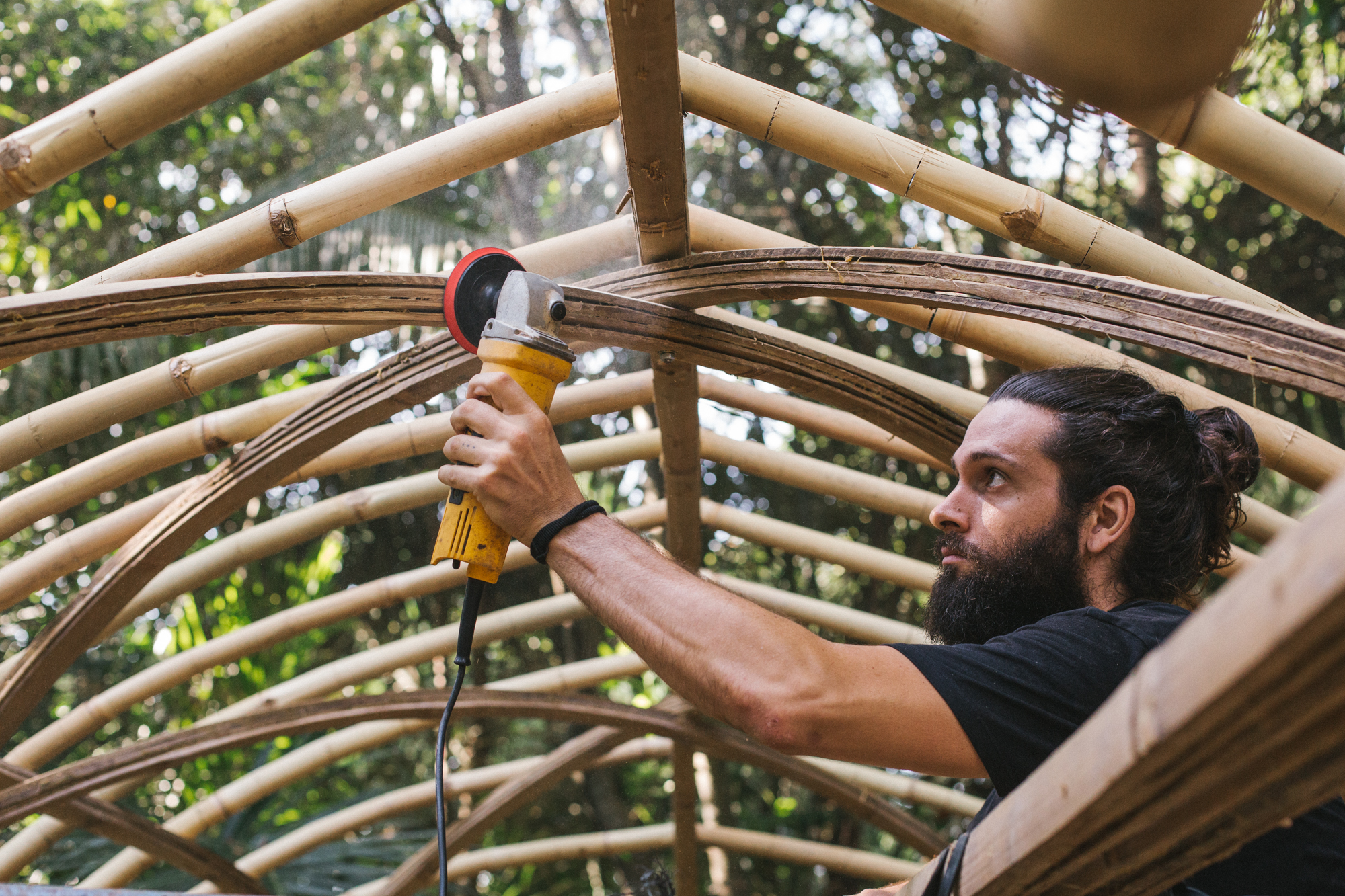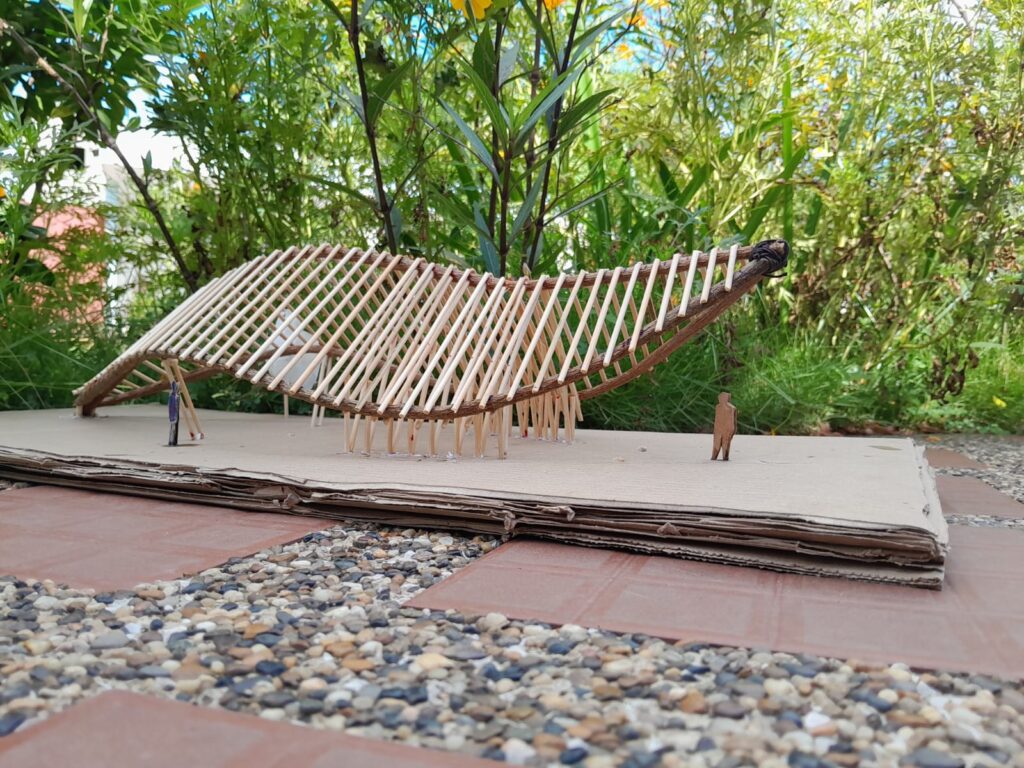The Process of Creating a Woven Bamboo and Rattan Lampshade
By | June 30, 2025 | Student Work -

Alikka was interested in exploring organic forms using a mixture of bamboo and woven rattan. Through her experimental process of working with the materials and understanding how they behaved, she crafted this beautiful lampshade in just 3 days!
My name is Alikka and I’m a ceramic artist teacher from Denmark. I joined the Bamboo U in-person course in March 2025. During the second half of the course, I joined the Design and Carpentry station and crafted a woven bamboo and rattan lampshade.
My goal was to integrate bamboo in my work with lampshades. In the way I work, I want to be able to “build” organic and use this process to develop the shape of my final form. Therefore, it was important for me to have time to just explore working with the material before deciding/drawing what to do. Then, after that, I was able to draw a sketch to guide my overall form.

Related: Check out this hand-made bamboo umbrella lamp!
I was inspired to create an organic shape through my participation and experience of joining the bamboo tunnel project, earlier in the workshop. However, I did not want to have a fixed base or frame. Rather, I wanted to make the weaving process determine the form of the project. After working with the rattan, I found a way to work with a bamboo structure to act as scaffolding. This way, I could remove this form after the woven elements became strong enough to hold their own shape.

To craft the project I used bamboo splits to create the overall formwork that held the woven elements in place until they were strong enough to hold their shape. I also used long rattan pieces between 1.5cm to 2cm in width for weaving. This is because they were much more flexible than weaving with bamboo, which is more sturdy and rigid.
The aim of my project was to create a project that was light and organically woven, using a bamboo structure and rattan. I began by getting a feel of the materials first, to understand how they behave. This process was useful and I enjoyed it as a stage to start developing what the overall form of my lamp could look like.
After understanding how the bamboo and rattan behaved, I drew out a sketch of what the possible form of the lampshade could take. This guided how I crafted the bamboo structure that acted as a “scaffolding” for the weaving. Once I made this structure, I started weaving the rattan in multiple layers, to create an organic, almost bubbling geometry.
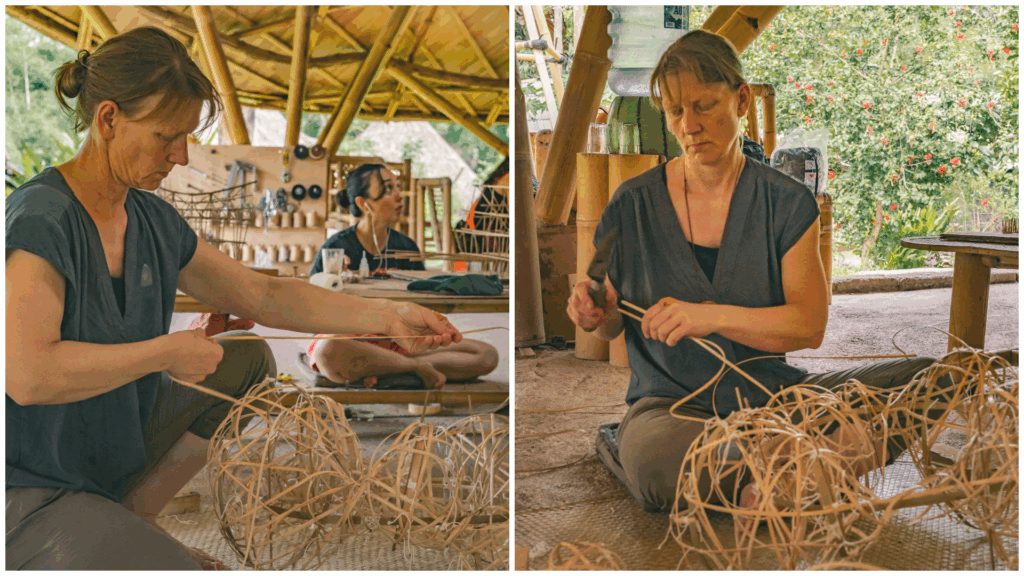
Related: Building A Beautiful Bamboo Hammock Chair
I really enjoyed the hands-on experience I could get during this course, and especially at the Design and Carpentry station. Through this, I could really experiment with the materials and get firsthand experience of how to work with them. This experimental process is what shaped the form of my lamp and allowed me to create exciting organic shapes in alignment with my vision for the project.
Ready to design your own lampshade or project of your choice? Join us for one of our courses HERE!


